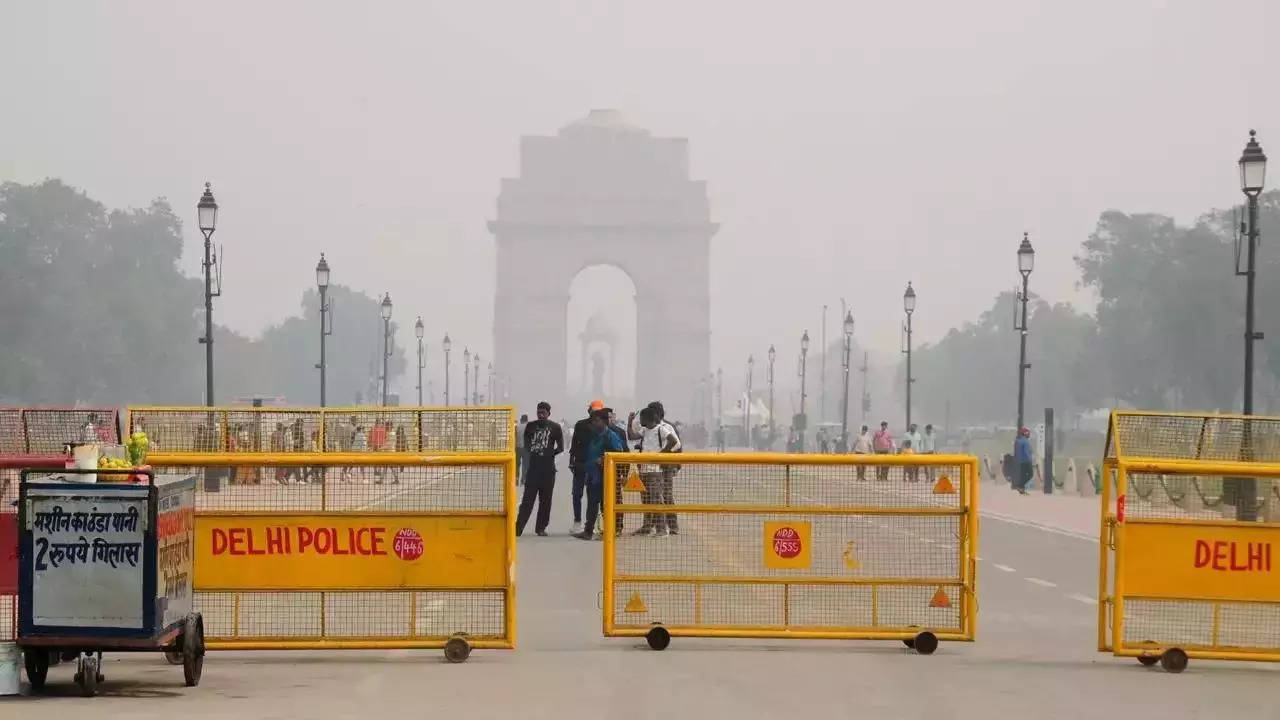
NEW DELHI: According to the latest analysis of air pollution levels by the Centre for Science and Environment (CSE), this winter saw the cleanest air in the Delhi-NCR region since large-scale monitoring started in 2018.
The concentration of air pollutants in Delhi stood at 160 micrograms per cubic meter for the October-January period, which is the lowest level recorded since wide-scale monitoring started in 2018-19, the leading think tank said in its report.
"The PM2.5 level, computed by averaging monitoring data from 36 Continuous Ambient Air Quality Monitoring Stations (CAAQMS) stations located in the city was 17 per cent lower compared to the seasonal average of 2018-19 winter. Based on the subset of the 10 oldest stations, there is an improvement of almost 20 per cent," the CSE report said.
It also said that the number of days with severe or severe-plus air quality was the lowest in the last five years.
"This winter, around 10 days had a city-wide average in 'severe' or worse AQI category, which is much lower compared to 24 such days in the previous winter and 33 in the 2018-19 winter," the report said.
According to CSE, the city also recorded five days of good air this year which is an improvement over the last winter which had recorded one "good" AQI day, whereas, earlier winters did not record any "good" air quality days.
Farm stubble fires this winter were about half of the last winter as the total count of stubble fires reported this year from Punjab, Haryana and Delhi in October and November stood at 55,846 (according to NASA's VIIRS satellite) and 12,158 (according to MODIS satellite) respectively.
"These are respectively 36 per cent and 40 per cent lower than the figures for October-January in 2021-22. If the FRP (fire radiative power which is the measure of the intensity of fire) is taken into account in addition to the number of fires, it becomes clear that not only were the fires lesser in count, but also lower in intensity compared to the previous two years," the CSE report said.
It also said that fires have been lower between October 2022 and January 2023, both in count and intensity, compared to the previous two seasons, but are marginally higher compared to the 2019-20 season.
"The spike seen in the fires since the beginning of the pandemic has ended and the situation has reverted to a pre-pandemic scenario. This is a relatively better scenario, but we are still far from attaining our clean air objectives," the report said.
The quantity of smoke from farm stubble fires affecting Delhi is dependent upon two major factors - quantity and intensity of farm stubble fires and meteorological conditions conducive for transportation of the smoke to Delhi.
This winter, not only the quantity and intensity of farm stubble fires have been low, but also the meteorological conditions have been less conducive for the transport of the smoke and as a result, the total smoke that fell upon Delhi in the form of PM2.5 has been considerably less.
The CSE estimates that about 4.1 tonnes of PM2.5 affected Delhi this winter in the form of smoke, which is 37 per cent less than the 6.4 tonnes last year and almost half of the 2020-21 winter figure.
However, the report also mentioned that even though there has been a significant decline in peak pollution levels, air in NCR continues to remain toxic.
"In comparison to the other NCR cities, Delhi was the most polluted city followed by Greater Noida this winter.
"Among the five big NCR cities, Ghaziabad registered the highest improvement in its winter PM2.5 level with a reduction of 23 per cent compared to the previous winter average. Noida (17 per cent), Faridabad (12 per cent) and Gurugram (6 per cent) also registered improvements in air quality, but it worsened for Greater Noida (-3 per cent)," the CSE analysis report said.
About the way forward, the CSE said clean fuels and emissions control systems are needed in the industries. It also said that massive electrification of the vehicle fleet and scaling up of integrated public transport options with vehicle restraint measures are also needed.
"The only way to prevent the high peaks and smog episodes during winter is to ensure sustained improvement in air quality to meet the national ambient air quality standard across the region.
"This requires region-wide implementation of urban greening and dust control, waste management based on 100 per cent segregation, material recovery and zero landfill policy," the report said.
Clean construction and recycling of construction and demolition waste, and replacement of solid fuels in households are some other measures that the CSE suggested to prevent the high peaks of pollution in NCR.
(With PTI inputs)







